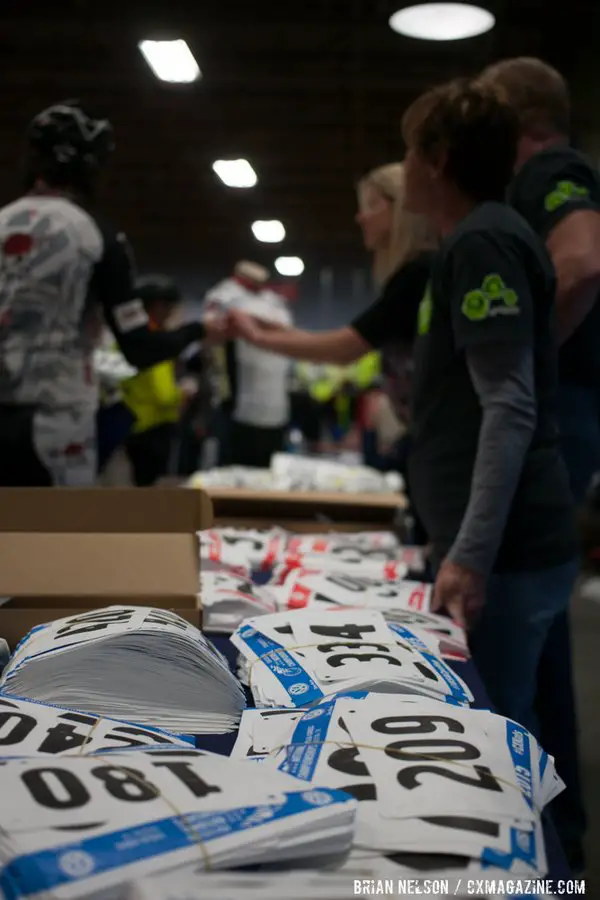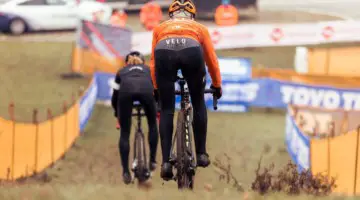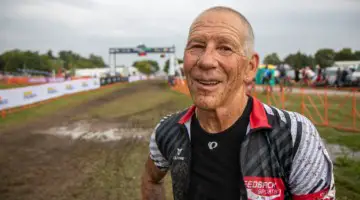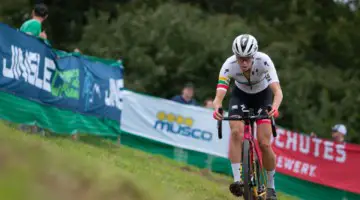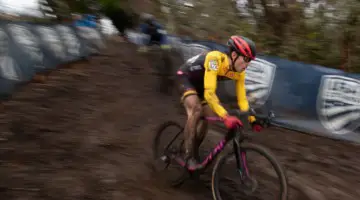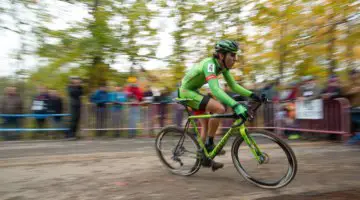This week’s Training Tuesday series article by Chris Mayhew of JBV Coaching focuses on how to plan and execute your race day. Cyclocross season is still a month or more away for most of us, but now is the time to start planning your race day routine.
What to do on race day? It’s a question we get consistently at ’cross clinics, and I think it’s a very important one. I’m a big believer that ’cross is really a series of checking boxes, and if you check them all you’ll have your best performance. Having a check list allows you to take control from your animal brain, which is freaking out, and instead channel that energy into working the problem. I realize I am writing for a very wide audience and your race schedule may vary from what I outline. For this article let’s assume racing starts at 9 a.m. with a race starting on the hour every hour. If you have questions about your individual situation, please feel free to hit me up on social media.
Getting to the Race Venue
The number one driver of the day is knowing when your race starts. Everything else flows from that. Ideally you’d eat about 500 calories roughly 3 hours before your race. I’m a fan of a meal consisting of a 1/2 cup (before cooking) of rice and 2 eggs, with some soy sauce. That’s a subject unto itself, but the main thing I’ll say is never experiment on race day—have a go-to pre-race meal.

Rice and eggs with a bit of soy sauce is Chris Mayhew’s breakfast of choice. Oatmeal was another popular choice among National Champions in our annual interviews, but the key is to avoid experimenting on race day. photo: khastie0714
The next goal is to arrive at the venue early. If you’re in the first race of the day, arrive 90 minutes before that race, so 7:30 a.m. for a 9:00 a.m. race. Or if you race later in the day, arrive three race periods before your race, on the half hour. So if you race at 1:00 p.m., arrive at 9:30 a.m.
If you can travel with someone. I highly recommend it, especially if that person has some experience and doesn’t bring a lot of drama. There is so much that can be learned just talking on the drive with someone else.
It can really be an invaluable period of time if you spend the drive picking the brain of someone who has done the race before. Why rediscover or reinvent the wheel yourself when someone else has already made a bunch of mistakes for you to learn from?
When you arrive at the venue, there will more than likely be a person or several people directing you to the appropriate parking area. Be nice to them. Do what they say, say thank you to them and go about your way. They’re volunteers. I know you’re nervous and keyed up but that’s no excuse to vent that on other people.
Inspect, Respect and Make it Official
Now you’ve parked your car. Get out and get your bike ready to ride. It doesn’t have to be perfect, but air up the tires and make sure the brakes work. If there’s something wrong with the bike you can cut short some other part of the process but if you don’t discover a problem until later in the day, it’s going to be very hard to address any issues.
Get your warm up clothes on. These are hopefully clothes you are not going to race in. I typically start with my jersey and shorts and then add whatever I need over that to address the weather (e.g. tights, jacket, gloves). If you have an extra helmet or shoes, it’s nice to warm up in those as well. The idea is not to sweat in the clothes you’ll be racing in later, or get them filthy in the case of a wet day. When you’re racing bikes you’re operating very low on Maslow’s hierarchy of needs, so creature comforts like starting in a dry chamois and dry socks goes a long way. If you don’t have extra clothing that’s fine, but man, it’s really nice. You can always warm up in non-team clothing, or last year’s team kit. And yes, in the summer this step isn’t as necessary. But do you want to have two race day protocols, one for good weather and one for bad? Stick to the same routine every time to minimize variables and decision making. Last step, stick your phone, racing license and wallet in your back pocket.
Now you’re going to go to the finish line and wait for the end of the race that’s going on. Or, even if there’s not a race going on, there should be a designated place to get on course. Typically that’s just past the finish line. If there is a race going on, wait for the winner to cross the line, then wait for the OK from the officials. Now you can do a lap.
Do not pass or tailgate people racing. It’s rude and unfair and you have plenty of time, so just chill.
Also, if you see a big group of people riding slowly, don’t hot line through that group. They are probably behind the last racer on course. Often I’ll ride until I hit that group, then go back to the finish and get back on course again to let that person finish.
Ideally you’ll do one or two laps of the course. These should be slow. You’re just trying to look at the course and figure out some key variables. Where are the corners, what’s the overall feel like, what looks hard? These laps are basically simple recon. If I have raced at the course before, I like to recall what happened at the last race too, especially the positive aspects. I’m trying to get stoked and remember the good times and overall put myself in a good mood.
The course may be closed at this point for the next race. Even if it’s not, roll over to registration.
Be nice to the people at registration. They are volunteers as well. Greet them, be polite and kind.
If I can lay eyes on the registration binder for my race while waiting in line, I do that, just to make things easier. You’ll need to present your paper license or proof of license via your phone. If you don’t have one, you’ll probably need to buy either a one-day or annual license (if your race is sanctioned by USA Cycling or NABRA or NACS) and fill out some paperwork.
When they hand you your racing number, ask them what side it goes on. Then write that down on the back of the number. Make one fold to fit it in your pocket, but do not wad up the number. [Ed. note: See “How to Pin Your Race Number” demonstrated in this video.] And say thank you one more time.
If there’s a race going on it’s time to go back to the car. Get your gear out and laid out in an organized manner so you can find it more easily. I also like to have a clock and dry erase board set up as well. The board has race times listed along with tire pressure (Thanks to Team Aspire’s mechanic Tom Hopper for that tip).
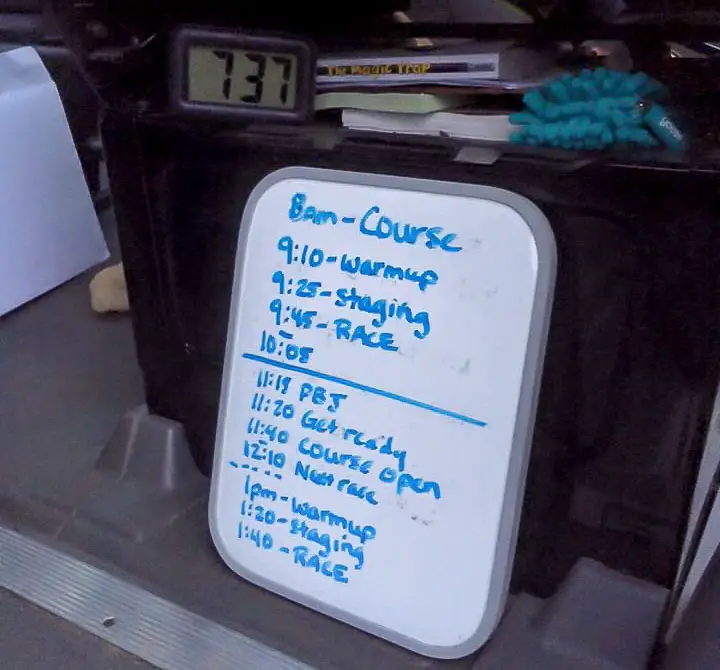
Whether you are Jeremy Powers or a new racer, a plan, schedule and organization will help you achieve your best result. photo: Peter Hills
A folding chair is really nice, along with a mat to keep your feet off the ground. Lay your bag(s) nearby so you don’t have to get out of the chair. Address any bike issues you might have.
If there’s not a race on course, go out for another one or two laps. These laps will be faster, hitting stuff near race speed, or at least the corners and obstacles. Figure out your lines and the best places to ride. Go back and re-ride any sections you can’t ride. Jeremy Powers rode one corner of the 2015 Austin Nationals course 40 times. He had a full day to burn to do that and you don’t. But my point is, have a plan in every corner and focus on executing that plan every lap. Hope is not a plan.
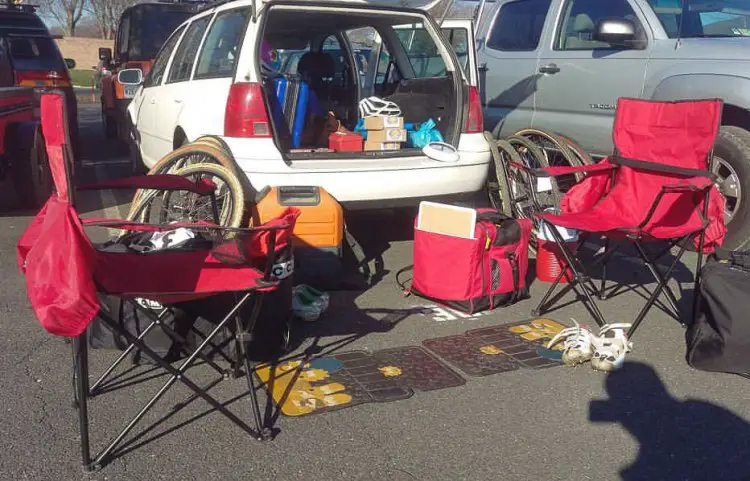
Chair, changing mat, spare equipment and clothes all make for a less stressful race day. photo: Chris Mayhew
The Final Countdown
It may be time to get off the course again because of the next race. In either case, go back to the car at this point. This is your final prep period. At this point you want to put on race clothing. Any last minute bike prep should happen now as well. This is a great time to top up on hydration and fueling too. You don’t need to consume a lot, but fill a water bottle and maybe grab half a Clif bar and maybe a gel to tuck under your shorts leg to consume on the line.
You’ll want to go out on course one more time and do one or two hot laps. These are more or less at race pace. You’ll want to see what has changed, especially if there have been other races during the day. You’re also trying to get warmed up. Lastly, you’re trying to see what all the corners feel like at speed.
If there are racers on course you’ll want to cut this part short a bit. You may have limited time to do a lap and get to the line. I have missed my call up by overestimating the time I had and it wasn’t fun. Always err on the side of showing up to staging early rather than late.
You can and should wear extra clothes to the line if it’s cold or raining. Wear as much as you need to, but make sure it’s something you can remove fairly easily. There will be a huge pile of clothing at the line and you can add yours to the pile. You can also bring a small bag to the line to put your clothing in. This is especially handy if it’s raining and you’d like dry clothes to put on at the end of your race.
Once you get to staging, see if you can do three or four starts off the line through the first corner. The start is the fastest you will hit that corner all day and it’s good to know what it will feel like at maximum speed. Have a primary and secondary line planned for this corner. Everyone knows what the good line is but not everyone will get to take it. Again, you don’t want any surprises, so ride that plan B line as well so you know what it will feel like.
Gain Confidence Through Planning and Don’t Freak Out
This is a lot of ground to cover. And course inspection can and should be its own article. But this is an overview of how to handle your race day schedule. Even though cyclocross season is a month or more away, now is the time to start planning.
Have a plan, stick to the plan (except when some aspects of it doesn’t work). Focus on checking boxes on your timeline instead of freaking out. If your process is a solid one, it should give you a lot of confidence in the final outcome.
No matter what your training has been like up until this point, having a solid race day plan puts you way ahead of a lot of other people on race day. Think of it as a free holeshot.
Enjoy this piece? Read more Training Tuesday pieces here to get ready for cyclocross season.













